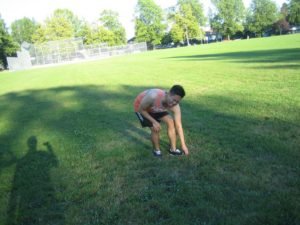Turf toe is basically a sprain that involves the ligaments surrounding the big toe joint. Even though the condition is commonly linked with football players who play on artificial turf, it can also affect athletes in other sports such as basketball, soccer, gymnastics, wrestling and dance. Turf toe is caused by jamming the big toe or continuously pushing off the big toe in a forceful manner such as when jumping or running.
Causes of turf toe
Turf toe is a sprain to the ligaments surrounding the big toe joint which functions primarily as a hinge to allow the up and down motion. Behind the big toe joint in the ball of the foot are two pea-shaped bones that are embedded in the tendon that are responsible for moving the big toe. These are called as the sesamoids that function as a pulley for the tendon while at the same time providing leverage when running or walking. Additionally, they also absorb the weight that presses on the ball of the foot.
If an individual is tackled or falls forward and the toe remains flat, it causes hyperextension of the toe. Once this is repeated over time or abruptly, it can cause a sprain in the ligaments surrounding the joint.
In most cases, the injury is abrupt especially among athletes who play on artificial surfaces that are hard. On the other hand, it can also occur when playing in grass surfaces, especially if the shoes worn do not provide good support to the foot.
Symptoms of turf toe

If turf toe is suspected, it includes the following symptoms:
- Pain
- Swelling
- Diminished movement of the joint at the base of the big toe
Take note that these symptoms develop at a slow pace and gradually worsen over time if it is due to repetitive injury. If it is caused by an abrupt motion, the injury can cause a lot of pain right away and can worsen in just 24 hours. In some cases, you can even hear a pop. The entire joint is usually involved and there is limited movement of the toe.
Diagnosing turf toe
When diagnosing the condition, the doctor will ask the individual to explain how the foot was injured, participation in sports, occupation, history of foot problems and type of shoes used. The doctor will examine the foot, determining the pattern and location of the swelling and compare it with the normal foot.
An X-ray will be requested to rule out a fracture or other damages. In some cases, the doctor might even request for other imaging tests such as CT scan, bone scan or MRI.
Treatment for turf toe
The primary treatment for turf toe is the RICE method that you can learn in any first aid course. This basic treatment will allow the injury enough time to heal. It simply means that the affected foot must be rested and protected from further injury. Over-the-counter medications such as ibuprofen can be given to minimize the pain and inflammation.
When resting the toe, it must be strapped or taped to the next toe in order to relieve the stress on it. Another way to protect the joint is to immobilize the foot with a cast or special shoes that keeps it from moving.
It usually takes 2-3 weeks for the pain to fully subside. After the joint ends have been immobilized, some would require physical therapy to restore the normal range of motion and strength. Additionally, conditioning of the affected toe is also needed.
